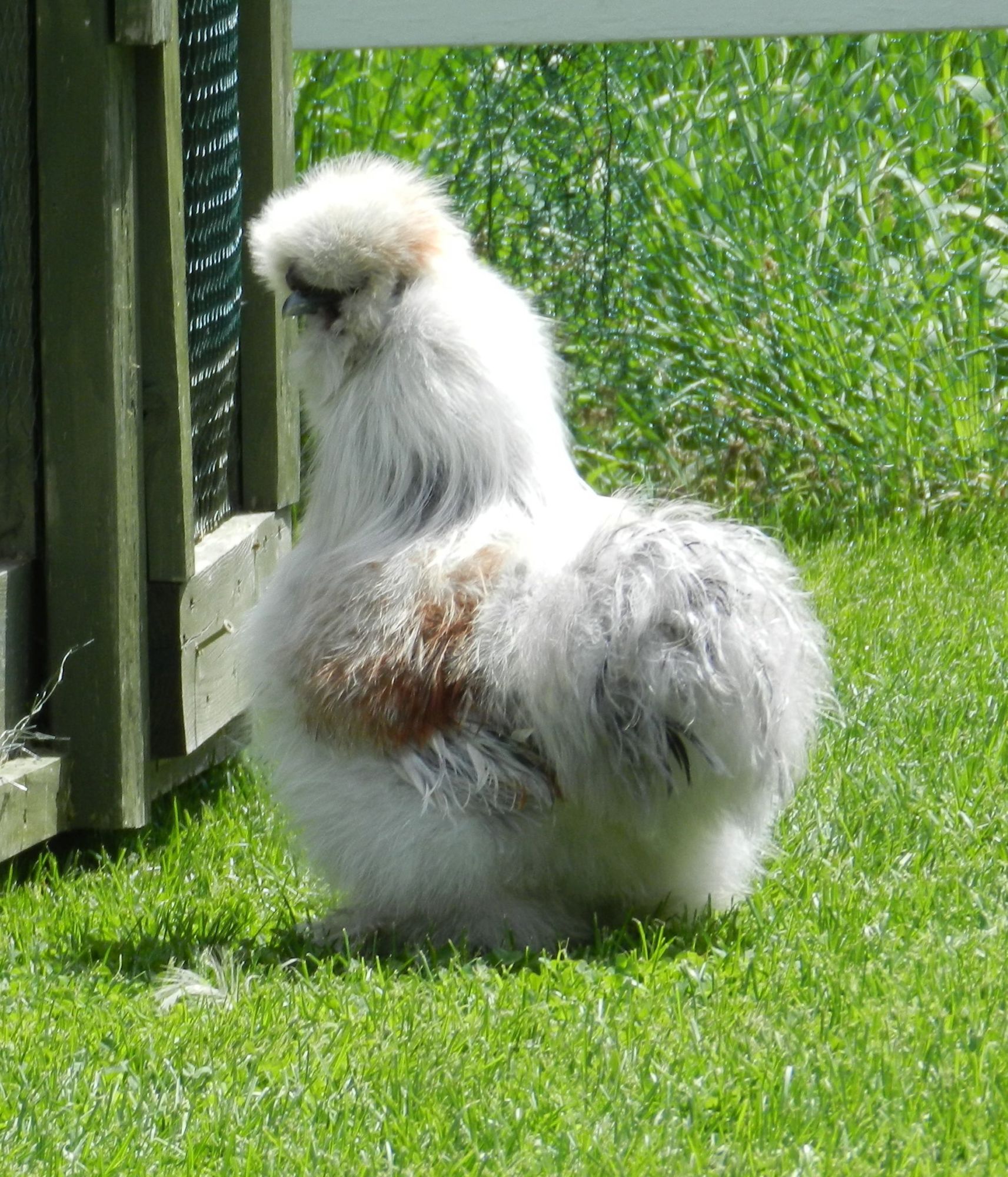Navigation
Install the app
How to install the app on iOS
Follow along with the video below to see how to install our site as a web app on your home screen.
Note: This feature may not be available in some browsers.
More options
You are using an out of date browser. It may not display this or other websites correctly.
You should upgrade or use an alternative browser.
You should upgrade or use an alternative browser.
Silkie thread!
- Thread starter americana-chick
- Start date
- Jan 30, 2009
- 2,621
- 121
- 251
Question about color. I have a white pullet, yes she has laid eggs so I know its a she, with light buff around the underside of her beard like a necklace..
I thought hens couldn't only have 1 color gene. I'm confused!
I thought hens couldn't only have 1 color gene. I'm confused!
Question about color. I have a white pullet, yes she has laid eggs so I know its a she, with light buff around the underside of her beard like a necklace..
I thought hens couldn't only have 1 color gene. I'm confused!
Hens have only 1 allel of the sex-linked genes. Recessive white "c/c" or Dominant white "I/I" aren't sex-linked genes.
Last edited:
What a fitting name for such a handsome guy!! Would you mind reposting some of his baby photos? I can't remember what he looked like.
Quote:
Can/will you elaborate??? I am not understanding the response .... (would very much like to because I am also keen on whites ....)
Can/will you elaborate??? I am not understanding the response .... (would very much like to because I am also keen on whites ....)
There are 2 kind of color-genes, sex-linked and autosomal color-genes.
In birds (as chickens are) males have 2 alleles of a sex-linked gene => S/S , females have only 1 allel of it => S/- (S stands for Silver).
Of autosomale genes males and females have 2 alleles of it => c/c (c stands for colorless = recessive white) => I/I (I stands for Inhibitor = Dominant white).
From my color-genetic guide, this are the 18 color-genes to count with :
- [FONT=Verdana, sans-serif]Geni Autosomici:[/FONT]
- [FONT=Verdana, sans-serif]E (Extended black) [/FONT]
- [FONT=Verdana, sans-serif]Ml (Melanotic)[/FONT]
- [FONT=Verdana, sans-serif]Mh (Mahogany)[/FONT]
- [FONT=Verdana, sans-serif]Cha (Charcoal) [/FONT]
- [FONT=Verdana, sans-serif]C (Recessive white) [/FONT]
- [FONT=Verdana, sans-serif]I (Dominant white) [/FONT]
- [FONT=Verdana, sans-serif]Mo (Mottled)[/FONT]
- [FONT=Verdana, sans-serif]Bl (Blue)[/FONT]
- [FONT=Verdana, sans-serif]Lav (Lavender)[/FONT]
- [FONT=Verdana, sans-serif]Di (Dilute)[/FONT]
- [FONT=Verdana, sans-serif]Ig (Inhibitor of Gold/Cream)[/FONT]
- [FONT=Verdana, sans-serif]Cb (Champagne Blonde)[/FONT]
- [FONT=Verdana, sans-serif]Co (Columbia)[/FONT]
- [FONT=Verdana, sans-serif]Db (Dark Brown)[/FONT]
- [FONT=Verdana, sans-serif]Pg (Pattern gene)[/FONT]
- [FONT=Verdana, sans-serif]Geni legati al sesso:[/FONT]
- [FONT=Verdana, sans-serif]S (Silver)[/FONT]
- [FONT=Verdana, sans-serif]B (Barred)[/FONT]
- [FONT=Verdana, sans-serif]Choc (Chocolate)[/FONT]
Last edited:
Quote:
Yes, I sort of understand - sex-linked and autosomal but what does any of this have to do with white???? c/c or I/I or any combination thereof ?????? And how does any of this apply to Marquisella's question about the band around the neck?
What am I missing?
Question about color. I have a white pullet, yes she has laid eggs so I know its a she, with light buff around the underside of her beard like a necklace..
I thought hens couldn't only have 1 color gene. I'm confused!
Yes, I sort of understand - sex-linked and autosomal but what does any of this have to do with white???? c/c or I/I or any combination thereof ?????? And how does any of this apply to Marquisella's question about the band around the neck?
What am I missing?
Marquisella said she was confused because she thought hens only had 1 color gene...
SilverSilkie :
There are 2 kind of color-genes, sex-linked and autosomal color-genes.
In birds (as chickens are) males have 2 alleles of a sex-linked gene => S/S , females have only 1 allel of it => S/- (S stands for Silver).
Of autosomale genes males and females have 2 alleles of it => c/c (c stands for colorless = recessive white) => I/I (I stands for Inhibitor = Dominant white).
Think of sex-linked birds....the females get ONE allele of the color gene, where as males get TWO alleles - making them different and sex linked
Autosomal means it affects both genders not one or the other. autosomal colors both sexes have 2 alleles
Whites - you have recessive white and Dominant white. - which is c/c and I/I both males and females have this formula in their makeup. So he was saying she was mistaken about the hens having 1 color gene - white is autosomal meaning there are two and it is entirely possible for there to be leakage or another color bleeding through
***though it is a bit odd on a white bird except when they are actually paint atleast to MY understanding....
New posts New threads Active threads
-
Latest posts
-
-
-
How would you make this opening predator proof?
- Latest: Mother of Chaos
-
-
Latest threads
-
Open Contest BYC Poultry Caption Contest 12-26-25 Pic by thecatumbrella
- Started by TwoCrows
- Replies: 5
-
Open Contest BYC Pets & Livestock Caption Contest 12-26-25 Pic by chickengirls16
- Started by TwoCrows
- Replies: 3
-
Looking for a cause of death for my hen
- Started by diprilif
- Replies: 1
-
-
Lethargic chicken with diarrhea and firm abdomen.
- Started by superjec
- Replies: 1
-
-
Threads with more replies in the last 15 days
-
Heater or heat panel -10
- Started by IowaCHKN
- Replies: 156
-
-
Introducing TUDYBOOK - The Tudy Coloring Book Generator
- Started by Nifty-Chicken
- Replies: 57
-
-
Ended BYC Pets & Livestock Caption Contest 12-12-25 Pic by Gill-b
- Started by TwoCrows
- Replies: 45
-
×




